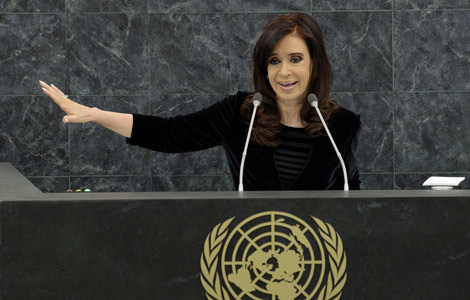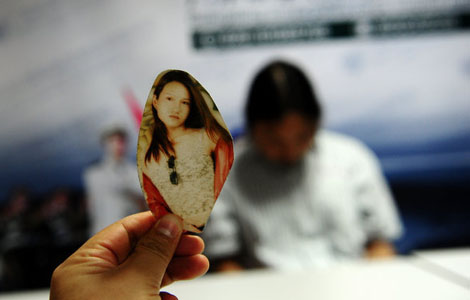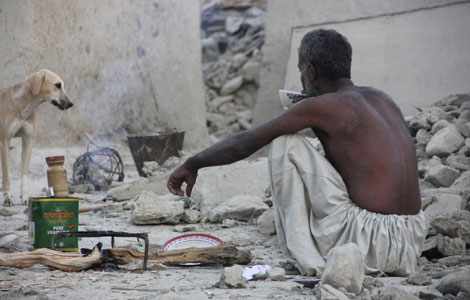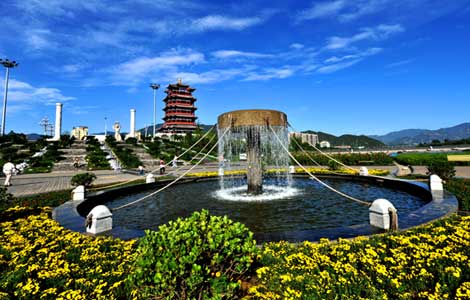Keeping sight of the bigger picture
Updated: 2013-09-25 15:44
By Julia Slingo (chinadaily.com.cn)
|
||||||||
The Intergovernmental Panel on Climate Change (IPCC) is expected to publish the Fifth Assessment Report, a worldwide scientific collaboration among contributors including the UK Met Office. The following was written by Julia Slingo, chief scientist of UK Met Office.
We are living in a changing world. 2012 was among the ten warmest years on record – continuing the long-term trends we have seen in our changing and varying climate. As carbon dioxide levels continue to climb, these changes are not just confined to global temperatures. Keeping sight of the bigger picture shows evidence of a changing world in rising sea levels, melting Arctic sea ice, and shrinking ice sheets.
And this evidence is indisputable. Observations across the climate system, from land-based stations and ocean buoys to international satellites, show a warming planet. The fundamental physics is clear; carbon dioxide traps radiation and warms the planet. If we increase carbon dioxide levels in the atmosphere, temperatures will rise and a warmer world will be a more challenging place for us to live.
| "Climate change is already costing us dearly." |
A new paper by scientists from the UK and the US provides evidence that human influences on the climate played a role in the severity of a number of these events. For example, the paper concludes that the frequency of occurrence of the extreme heat experienced in the US during 2012 is four times more likely as a result of human-induced climate change, and that climate change contributed about 35% of the high temperatures in the eastern US between March and May.
It also highlights the increasing risks of coastal inundations from events such as Hurricane Sandy, which broke 16 historical storm-tide levels along the US East Coast. Increases in sea level related to climate change have nearly doubled today’s annual probability of a Sandy-level flood compared to 1950. As sea levels continue to rise, coastal communities face a looming crisis with an increased frequency of flood events on a par with Sandy but from storms of less intensity and lower storm surge.
The paper’s authors are rightly cautious in not overstating the case for human influences on extremes, in particular those related to extreme rainfall. What is clear is that climate change is already costing us dearly, and that when combined with growing population and urbanisation, is projected to disrupt regional and global energy, food, water and health security.
The climate system is immensely complex and it is not surprising that as our understanding of it increases, climate scientists will provide new perspectives on the risks we face from climate change.
It can often be all too easy to focus on minutiae, to burrow down into the proverbial rabbit hole. Yet to do so risks losing sight of the bigger picture - that the world is changing and we are playing a part.

 World leaders at UN General Assembly
World leaders at UN General Assembly
 Plastic surgery can be beauty killers
Plastic surgery can be beauty killers
 In photos: Deadly earthquake in Pakistan
In photos: Deadly earthquake in Pakistan
 China to inaugurate Shanghai FTZ on Sept 29
China to inaugurate Shanghai FTZ on Sept 29
 China's investment a 'job-saver' in Europe
China's investment a 'job-saver' in Europe
 Pollution control plan to slash PM2.5
Pollution control plan to slash PM2.5
 The beauty and beasts of selling hot houses
The beauty and beasts of selling hot houses
 Tian'anmen's flowery moments for National Day
Tian'anmen's flowery moments for National Day
Most Viewed
Editor's Picks

|

|

|

|

|

|
Today's Top News
208 killed in SW Pakistan earthquake
Foreign Minister Wang makes the rounds at UN
China to surpass US as top trader
Smithfield voters approve deal
Trending news across China
Ultra wealthy population shrinks in China: report
White House to enroll millions in Obamacare
Brazilian president blasts US for spying
US Weekly

|

|




